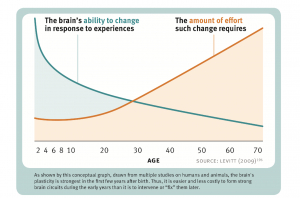Neuroplasticity: Difference between revisions
From BurnZero
No edit summary |
No edit summary |
||
| Line 1: | Line 1: | ||
[[File:Neuroplasticity.png|alt=Neuroplasticity|thumb|Neuroplasticity]] | [[File:Neuroplasticity.png|alt=Neuroplasticity|thumb|Neuroplasticity]] | ||
Neural plasticity, also known as neuroplasticity, can be defined as the ability of the nervous system to change its activity in response to intrinsic or extrinsic stimuli by reorganizing its structure, functions, or connections. Changes in plasticity differ across a humans lifespan.<ref>Changes in plasticity across the lifespan: Cause of disease and target for intervention. Accessed on 3rd March 2022, via https://www.ncbi.nlm.nih.gov/pmc/articles/PMC4392917/</ref> | Neural plasticity, also known as neuroplasticity, can be defined as the ability of the nervous system to change its default activity in response to intrinsic or extrinsic stimuli by reorganizing its structure, functions, or connections. Changes in plasticity differ across a humans lifespan.<ref>Changes in plasticity across the lifespan: Cause of disease and target for intervention. Accessed on 3rd March 2022, via https://www.ncbi.nlm.nih.gov/pmc/articles/PMC4392917/</ref> | ||
=== References === | === References === | ||
Revision as of 03:18, 3 March 2022
Neural plasticity, also known as neuroplasticity, can be defined as the ability of the nervous system to change its default activity in response to intrinsic or extrinsic stimuli by reorganizing its structure, functions, or connections. Changes in plasticity differ across a humans lifespan.[1]
References
- ↑ Changes in plasticity across the lifespan: Cause of disease and target for intervention. Accessed on 3rd March 2022, via https://www.ncbi.nlm.nih.gov/pmc/articles/PMC4392917/
